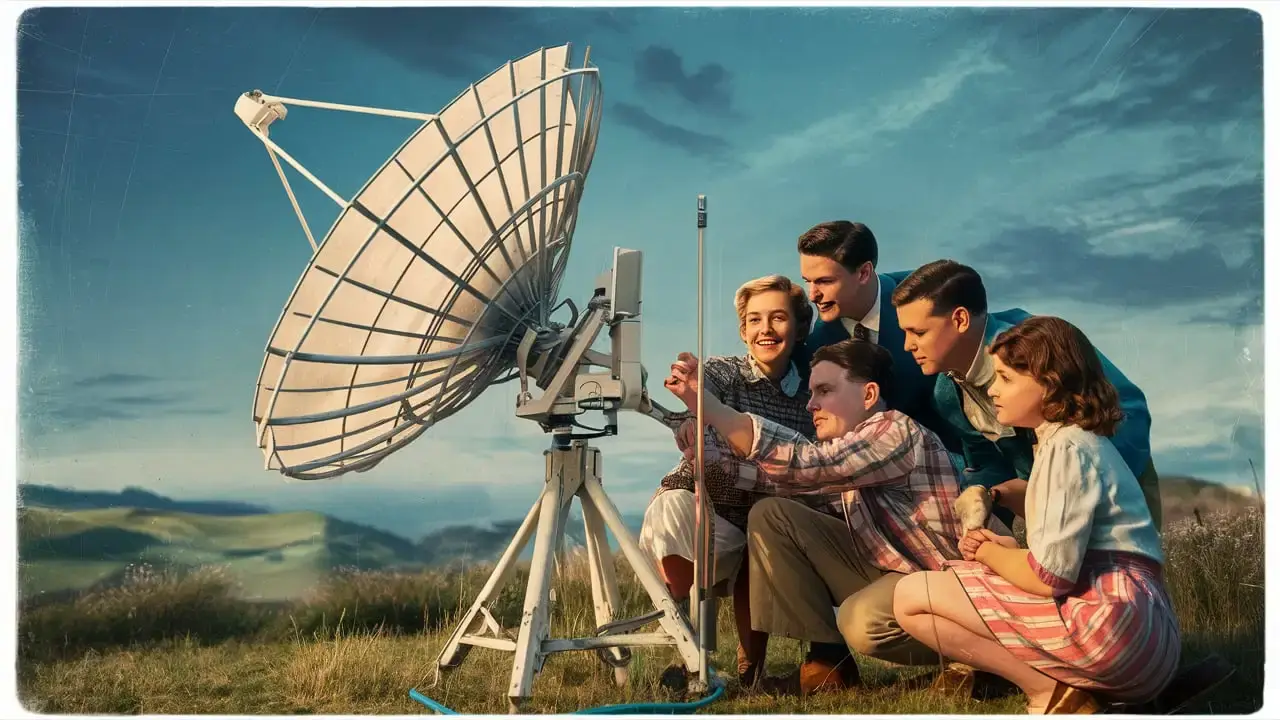
Altogether, your Dish Network satellite dish must be installed and pointed in the right position so that it will get the best signal and quality from your Dish service. It also allows me to be able to watch all the programs in the package without interference from signal interference. Read this comprehensive guide on Dish Network dishes aiming so that you can align your Dish Network dish properly.
Preparation
Before aiming your Dish dish, make sure you have the right equipment:
- The Dish satellite dish and mounting accessories like poles, brackets, bolts, etc. The dish sizes available are 24”, 30”, or 36” depending on the number of receivers to be connected.
- Unobstructed view of the southern sky where you plan to set up the dish. Find an area in the building where there are no obstructions that may hinder the installation of the system.
- Signal reception measuring device or a satellite meter or signal strength indicator. This is crucial for accurate pointing.
- This receiver box is associated with a Dish account.
- Physical cables such as coaxial cables to link the dish with the receiver.
You will also need some essentials that include a drill a wrench set, a level, a compass, a tape measure, and a ladder especially if you are installing the unit on the roof. Make sure that you have the proper LNB (Low Noise Block downconverter) to match the kind of dish that you own.
Pick An Installation Spot
Select an appropriate spot for placing the dish by following these tips:
- It should provide an open, broad view of the sky in the southern direction with no blockage to enable signals from Dish satellites to get through to the dish. Look for any tall objects like trees, poles, or any other structure that may pose an obstacle.
- Wall mounts should be positioned on the south side of your home or balcony, if possible. For pole mounts, choose the uncovered yard area where the height has maximum visibility towards the south.
- Make sure that the Dish hardware can be safely mounted and protected from the wind, rain, and other factors that exist in the outdoors.
Install The Mount
Install a sturdy pole mount or wall brackets as per your setup needs:
- This will require marking on the mounting surface and drilling through it while making sure that the drilling is perfectly vertical.
- If you are penetrating the bricks, masonry, or other soft boards like the drywalls, it is advisable to use screw anchors.
- Make sure to fix the mount firmly and ensure that it can support the weight of the dish and the forceful winds.
Attach The Satellite Dish
With the mount ready, attach the antenna dish using these tips:
- Fit the dish into the mount cradle carefully and tighten the bolts provided for this purpose. Make sure that nothing is placed in front of the LNB spotting area.
- Tighten the tension rods to ensure that the dish pole fits tightly into the mount when there is strong wind.
- However, do not connect the LNB and the coaxial cable until the dish has been correctly positioned to capture signals.
The azimuth angle is the horizontal angle measured clockwise from the north direction using a compass.
To indicate the direction of the satellite orbital path, you need to find the azimuth angle of where you'll point the dish:
- Take out the compass and then align the arrow with the North. True north is not similar to the magnetic north that you see pointed on the compass. It’s best to consult azimuth charts to see the difference for your specific area.
- Your azimuth is exactly 180 degrees about the true north, which is towards the south. Mark this 180-degree angle for the azimuth where you will be pointing the dish.
To determine the height of the satellite meter, point the dish in the direction of the satellite signal.
With the azimuth set, you can precisely aim the dish using the signal meter:
- Screw the satellite meter on the end of the coaxial cable and the other end to the Dish receiver box.
- All the dish adjusting bolts must be loosened to enable the dish to be moved to an appropriate position for pointing. Tilt the dish little by little to the left and right until the meter indicates the optimal signal strength. This means that you are in the satellite position, which means you are in at optimal position to handle the organization.
- Now tilt the dish left or right slightly to position it more directly towards the satellite while keeping an eye on the signal meter. All the adjusting bolts must be locked once the maximum strength is attained.
- Remember to aim the dish at different satellite positions if you intend to use it to watch channels from other Dish orbiters.
Connect And Test
With accurate aiming done, you can hook up your system:
- Insert the dual or single LNB into the bracket arm slot in front of the dish surface.
- Connect the coaxial wire from LNB through the holes or windows of the exterior wall to the satellite receiver box. Strip the holes and put Weather Sealant on them.
- Screw a compression F connector to the Dish receiver box LINE IN port and connect the coax cable to it.
- Turn on the Dish box and the connected TV to assess signal quality on all transponders and to ensure proper channelization.
- Signal strength should be above 60 while signal quality should show no errors for proper dish alignment to be done.
Fine-tune the dish periodically:
Your Dish can go out of alignment due to shifting on the surface or weather conditions among others. It is recommended to only perform signal metric checks occasionally, for example, once every few months. If necessary, adjust the azimuth angle or elevation back to optimum reception. These fine-tuning ensure that you can be able to enjoy Dish TV without interruption in the longest run.
To get the best out of Dish Network service, proper installation of dishes is of paramount importance. Use these aiming tips to capture satellite signals effectively: Azimuth and elevation of the antenna must be accurately positioned so that all the channels can be received clearly. It is as simple as taking a step at a time while using the right equipment to achieve the best signal quality.
Ready to upgrade your TV experience? Call us now at (877) 471-4808 to find the perfect Dish Network plan for you! Don’t miss out on great entertainment—our team is here to help you choose the best package and get you started today.





